 The Rise of Small Farm Robots
Or why the miniaturization of farm machinery will help encourage small, diverse farms.
The Rise of Small Farm Robots
Or why the miniaturization of farm machinery will help encourage small, diverse farms.
[IMG]https://cdn-images-1.medium.com/max/800/1*BRh0wZsQk_i-Uy6jHUoNZQ.jpeg[/IMG]
Marilee Foster is not the kind of farmer who makes rash decisions. But when she recently heard about Rowbot, a lawn-mower sized autonomous machine that can fertilize the soil, mulch weeds and sow crops on 50 acres a day, she asked, “How much does it cost? And where can I get it?”
Foster, a vegetable grower whose family has been working the same piece on Long Island for nearly four centuries, isn’t particularly tech forward. This card-carrying Luddite still hand-draws her exquisite farmstand signs, plays a transistor radio in her greenhouse and isn’t on social media. So when she showed so much interest in Rowbot, I realized how disruptive the farm droids could be . Was she concerned about Rowbot replacing her? “Not at all. I would consider it a helper,” said Foster, who struggles to find willing — and well-trained — staff for nearly everything she needs help for on the farm.
For decades, farm machinery has targeted industrial-sized farmers, underpinning the “get big or get out” ag model of consolidation. Now, the miniaturization of farm machinery may be the ag-tech counter-trend that actually encourages smaller, more diverse farms.
“When we think about the future in ten years, we’re going to see smaller machines rather than big ones,” said Rowbot’s founder Kent Cavender-Bares in a recent conversation of This Week in Startups podcast. The 64-row corn planters that crawl across the Heartland today are so large and expensive that they only make sense for the most gargantuan, and debt-worthy, farmers. They’re so heavy they compact the soil. And they don’t work if you decide to plant a rye, sorghum or anything besides corn. In contrast, Rowbot is small enough to get between the rows of corn, dropping fertilizer in microdoses, when the crop needs it. Much less fertilizer gets wasted and runs off the field to contaminate the water supply. These are things a big tractor simply cannot do. “Let’s say we just wanted to mix corn and soybeans on the same field. Today you can’t do that easily at scale.”
By making it easier to take care of a diverse landscape, the Rowbot actually allows the landscape to be resettled with a different type of farm. Small machines can get to spots on a field that farmers sitting in the cabs of big vehicles have struggled to tend well — ecological niches like the understory of a bean plant, in between two rows of corn, between layers of grape leaves.
When I recently spoke to Paul Hoff, COO of Agribotix, a drone-maker and drone analytics platform based in Boulder, CO, he confirmed that the majority of their customers are smaller farms. Hoff said the plummeting costs of drone components, like the near-infrared and thermal sensors drones use to “see” how plants are doing, as well as easy access to software used to analyse drone data, are the big reasons for wide use among smaller farms, whether in Poland, China or Egypt. Agribotix is used in 35 countries, on at least 42 different crops. In fact, Hoff suggested the benefits are greatest on complicated, diverse farms; not vast monocultures. Where labor is short, a surveying flight by a drone can help optimize when a vineyard decides to harvest its grapes, or a vegetable grower decides to check her eggplant for potato beetles.The downsizing isn’t just about the hardware, but also the business model and outlay for the farmer. Rowbot doesn’t sell its machines but instead leases them. “You heard it here first: RAAS, or Robots as a service,” said This Week in Startups host Jason Caalcanis, modifying the popular (and lucrative) acronym for Software as a Service or SAAS.
And while the incredible shrinking machine may be trite metaphor to a techie used to the faster, cheaper, smaller trends defined by Moore’s law, the notion of smaller machines is radical for the farm space. And yet the vast majority of the farms on the planet remain relatively small, particularly in poorer nations. A few years ago, when my colleague Danielle Nierenberg and I surveyed those technologies that are most effective at reducing hunger and poverty, for the Bill and Melinda Gates Foundation, our Gates colleagues repeatedly asked about answers to weed control, harvesting and other labor-intensive tasks on small African and South Asian farms. They knew that even in poorer nations, farm labor is not always available, as people are flocking to cities in increasing numbers.
Which brings us to HelloTractor. Calling itself the Uber of Farm Machinery, this startup based in Washington, DC and Nairobi, Kenya, allows farmers to request farm machinery, just as you might “hail” a car with Uber. HelloTractor’s delivery system is tied to its own small, smart tractors, which monitor usage and location for the security of the owner. Owners can help offset the cost of their purchase by renting it out. And because labor shortages on farms can lead to poor harvests and lost income, the wider availability of these size-appropriate machines can help whole communities grow.
[IMG]https://cdn-images-1.medium.com/max/800/1*GvifpcRA75Mx8fLy1QMXxQ.jpeg[/IMG]
HelloTractor owners can help offset the cost of their purchase by renting it out via an Uber-like interface.
Rent to Own Zambia takes this idea one step further allowing small-scale entrepreneurs in rural Zambia to “rent one water pump, one refrigerator and one hammermill at a time.” The platform isn’t just for farm implements, but the concept remains the same: targetted use of machinery to help humans boost production and income. According to an investor in Rent to Own, the company is just beginning to spread, but there is demand across Africa and a clear need for the same sort of machine “helpers” that my neighbor Marilee was so excited about. I think of the farmers in my community who envy a neighbor’s compost spreader or grain mill or legion of budding apprentices. And the farms that either fail, or never get started, because they don’t work as a one-man, or one-woman, operation. In this context, being able to call on Rowbot or HelloTractor, might make the difference between farm survival and farm extinction.
Companies are rolling out small machine products seemingly every week. I just came across BeanIoT, a sensor the size and shape of a bean developed by Cambridgeshire-based RFMOD that can be added to silos or other grain storage to monitor humidity, temperature and spoilage. And Infratab is developing active RFID labels that record freshness data points every 30 seconds and can be put on food packages — or even individual fruits, vegetables or groceries — to indicate if the foods have exceeded certain temperature or humidity thresholds that would compromise quality and safety. The soil-based sensor company CropX has just raised $10 million on the notion that its “internet of the soil” tool will save farmers time and money. These don’t have moving parts like what we think of as robots or machines, but they do “help” farmers in the same way a Rowbot or Agribotix drone will.
Yes, big machines may have allowed a single person to farm miles of land. But they also created farms low on diversity. Small machines could not only help large farms to become more diverse and ecologically sound, they can be a huge help to small, diversely planted farms that suffer from too little machine solutions to help them.
In his classic description of rural decline, The Unsettling of America, Wendell Berry recounted the process by which a declining number of very large farmers manage most of the American farmscape. A re-settling is the only antidote. And the rise of small farm machines might actually encourage it.
[IMG]https://cdn-images-1.medium.com/max/800/0*rru5cxQliBQ4MpOv.[/IMG]
To assist. Not to disrupt.
Earlier this summer, writing in Food is the New Internet, I took a dive into the world of small farm machines that will soon be crawling farm fields near you. In the sort of thoughtful, enthusiastic reaction that makes any storyteller smile, I was inundated with tips from robot builders, imaginers, investors and watchers from around the world.
Most important, I now know that the global farm robot space is bigger, more intelligent and closer-to-commercialization that I realized. We are perhaps a few short years from a day when you will drive past a farm or walk past a community garden and see a robot working the ground.
These visions are not unprecedented. As I learned from the robot geeks who came out of the woodwork, one of C3P0’s first lines in StarWars is an uptight comment about irrigation when he first meets the young moisture farmer Luke Skywalker. Gaze into the background of the shop where Skywalker tries to hack into R2D2’s memory and you’ll see other bots used by farmers on Tatooine, some of which look not unlike Rowbot and Agribotix powered drones and HelloTractors. In Asimov’s 1985 novel “Robots and Empire,” which takes place several millennia in the future, every planet in the galaxy, including the ailing Earth, grows its food entirely with the help of robots: many planets are stewarded by agricultural robots for the benefits of humans elsewhere.
I’ll admit occasional visions of a dystopic digital dirtscape. But I’m happy to report that the robots already working on farms around the world, so far, are delivering a different narrative. These bots, like the loyal R2D2 and BB8, are more concerned with assisting their human masters, than disrupting them.
It was in the middle of this back and forth volley with commenters in the robots space that I stumbled upon a picture that defines for me the great promise of farm robots. A young happy and bearded 30-something farmer in a trucker hat is wheeling a barrow between rows of carrot tops. And behind him, working in symbiosis, rolls a robot. Developed by Naio Technologies, a France-based robot builder, Oz, is a farmer’s helper, if it’s anything. It’s just that sort of farm that Naio is targeting, remarkably. That’s the transformative power of bots. Not to replace but to aid.
[IMG]https://cdn-images-1.medium.com/max/600/1*Hql5VMIZtz4-JW6mk0qa4g.jpeg[/IMG]
Models like their Oz, Cozy, Dino, Straddle, and Little Oz could weed veggies, move 100 pound weights (bags of compost, for instance), and collect all sorts of data on the state of the farm. Even better, they could do it continuously, day or night. There are models that plant seeds while they mulch. And there are primitive soft fruit harvesters that are not yet widely commercialized.
But it’s not hard to imagine that some major features breakthrough or price drop or increasing cost of employing human farmers, that farm robots might be seen wheeling into town to buy some odds and ends that the farmer (or farmwife) needs.
Oz is known as a hoeing robot. It drags a metal implement or rotor through the soil, targeting weeds, and also turning the soil.
Oz uses laser-based guidance technology to determine the best weeding depth, and can maneuver between fields with different crops, without inadvertently mowing over the plants. The developers are proud to say that Naio’s spirit animal of sorts is “a Hawaiian plant, having the ability to adapt to its environment.”
In one interview from 2014 Naio engineers noted that “the purchase of a robot, which costs at least 250 Euros per month, is profitable over a hectare of surface.” But Oz can also carry a payload, work at any hour of the night, and work autonomously once it’s programmed for a task, like weeding a few acres of densely planted vegetables. Oz knows exactly which plants are Swiss chard and which are Green Globe turnips. Oz knows what the weather is and will be. It’s tied into the local weather station and connected to all the other devices and platforms being used on the farm, from Salesforce to Granular, from smart irrigation pumps and soil sensors. As the sell sheet proudly declares, “Oz works perfectly alone but you can also guide it to your needs.”
From vineyards to walnut groves, and from sugar cane to sugar beet, the buyers of Naio bots have been diverse. One buyer sought to “tropicalize” the robot with a test in Indian sugar cane plantations.
Looking beyond Oz and Robots that Hoe.
The farm robot world is really so much bigger and all around us than we realize, with robots that are playing the role of farm dogs, pruning fruit orchards (picture Edward Scissorhands) and even planning small urban gardens.
A one-minute Facebook post by New Scientist has garnered nearly 7 million views, and thousands of comments, including some from makers of robots at universities, research facilities and companies around the world. But until my friend Brian Frank shared this video with me, I had not seen ANY of these robots, or heard of these companies. (I hadn’t even yet thought of looking for farm robots on Facebook.)
That is partly because most of these robots are still in the experimentation phase. But more and more are moving towards commercialization, like Naio’s creations or OctopusRobot’s food-safety monitoring chicken tender. But total available market is large and potentially increasing. Worldwide, the global “weed control” market is approaching $30 billion. And the global farm machinery market is estimated to hit $74 billion by 2020. Roughly half of that is “tractors.” But the global impact grows when we add in the time of farmers and farm workers around the world that weed fields and greenhouses.
And while Rowbot, the Midwest based small farm robot maker, is designed for corn and soybean farmers, Naio Technologies, and many of the other startups in this space, are laser focused on small vegetable farms, vineyards, orchards and generally more diverse farms than an Iowa corn fields. And if decades of agricultural technologies have criticized small diverse farms as too complicated inefficient, and labor intensive, then small farm robots can help turn that calculus on its head and be relevant to much more than the world’s commodity growers. They could be relevant to the hundreds of millions of farm families around the world who could never make use of a big machine. But for whom a small farming machine could be like a hired hand around the farm, what allows them to put in another crop, or manage the farm while also holding down a job off the farm — as most farmers around the world do.
What else is out there right now? Pretty much everything you can imagine. Bots designed to crawl up steeply sloped vineyards, seedling-sensing hoovers from Blue River Technology designed to thin, moisturize and take extra special care of every head of lettuce (while reducing agrochemical use by 90% through targeted microdosing), Kubota has developed pruning bots for fruit trees and is reportedly designing cybernetic suits that will help elderly farmers climb trees and carry large amounts of fruit.
Through my contacts at Naio I also learned about SwagBot designed to find and herd ruminants 0n Australian ranches.
It’s not inconceivable that robots like the pack mule type developed by Boston Dynamics (and parodied in Season 3 premiere of “Silicon Valley”) could be employed in “herds” to roam over the world’s grasslands, helping in restoration efforts, dropping seeds, mimicking the pasture-building impact of livestock, with a very different ecological footprint.
And where do self driving tractors and harvesters fit into all this? I took a close look at the CNH Industrial “Autonomous Tractor Concept,” developed by CNH’s strategic robotics partner Autonomous Solutions Inc., that got so much attention on Gizmodo recently. Love the promotional video. The farmer gets a scary looking weather alert on his tablet. He’s pulls over to the side of the road, does some mental calculus and decides to fire up the planter in anticipation of coming rain (assumption mine).
Hands-down, super cool. Although perhaps a bit too Porsche Cayenne to really penetrate the farm set. Yet I see that concept as transition tech, at best, as the largest farmers decide that a fleet of self driving tractors will do the job better than a bunch of human drivers. But part from disrupting the farm driver market, there’s nothing truly revolutionary that this concept vehicle can do. It’s still a huge tractor, made to pull big machinery over monocultural fields.
The explosive drone market, in contrast, segues neatly with the rise of small farm robots. Remotely piloted drones (of the smaller variety) are really just flying farm robots. Farmers are already the dominant commercial user of drones in America. And with more remote spaces to experiment in, it’s conceivable that farmers can be drone powerusers.
The investment bellweather Jason Calacanis just launched the “Inside Drones” newsletter. The United States just released drone ownership and usage guidelines, and industry analysts are saying that drones will figure large in the the 2016 christmas season could be the one when drone, according to a recent NPR interview with the chair of the Federal Aviation Association.
Small farm machines come onto the scene at a key crossroads for global agriculture. Advances in tech (sensors, robots, cloud based AI) are smashing into the harsh demographic reality of farming: an aging and declining population of farmers in every country on the planet. At a time when the countryside is being emptied, there bots are additional eyes on the ground, which can trod the rows, help optimize farm operations and better manage the land.
Not to mention the fact that many robot builders see farming as simply dangerous and back breaking. In a recent interview on Recode, the chief technology officer of iRobot, the maker of Roomba, the household cleaning bot, noted that the “drudgery of cooking and farming,” makes robots in the food chain inevitable.
Five Near-Term Predictions on Small Farm Robots
So, here are some predictions of what we will see in farm robots in the next 5–10 years.
Small farm robots will steal increasing market share from traditional farm machine makers like John Deere and Caterpillar. Small farm robots will also blow open wide a whole new market for farms that didn’t exist or could never have made use of a large tractor or combine. Naio’s smallest model, the Little Oz is available for as little as $300 per month, with rent to own financing. It’s being promoted especially to ag colleges and farm vocation schools in Europe for classes to buy, use, and give feedback on. Companies like AGCO, CLAAS, CNH Industrial, John Deere, and Kubota, which dominate the global tractor market are eyeing their play in this space, with a potentially bifurcated food system, which still includes huge industrial farms and a growing number of diverse smaller farms. But couldn’t the small farm bots still do it better?
Helping farms collect data and make sense of it will be an increasing role of small farm robots. These will not just be dull beasts of burden. They will remind the farmer when to shut off irrigation pumps, sound the alarm on early disease signs and collect phytochemical information to tell the farmer when to fertilize or harvest. As Tom Tomich, the head of the Agricultural Sustainability Institute at UC Davis, notes, we’re moving from a dearth of farm data to a flood of farm data. Just as devices like Nest or Roomba are helping tie the various components of a smart home together, the small farm robot will be the mobile brain of the smart farm.
A farm bot for every garden. With multi-colored Ball jars and an expanded veggie patch at the White House, edible landscaping is already trending. Add small farm robots to the mix and watch out world! Consider the devoted home gardener, like me. Would I consider paying $300 per month for a companion farm bot who would weed the beds that I can’t seem to get to? How about $150 per month? It could prepare the soil before I scatter a fall lettuce mix. It could watch my chickens and tell me (or better yet, my Rachio smart irrigation module) when I need to water. It could probably also mow my lawn. All of the sudden, it seems like a great investment. And the avid home gardener is a strong growing market, in urban, suburban and rural areas alike.
Automated container farms are sorta like a small farm machine that you can walk into. Advances in relatively small-scale indoor agriculture, a la Local Roots Farms and Freight Farms, are not so different in function than a small farm robot. They are not mobile; true. But they can provide a huge machine-learning boost to an individual, small scale food grower. Platforms like Square Roots, the vertical farming incubator recently launched in Brooklyn, allow food entrepreneurs an entry level piece of hardware that can turn them into a food grower overnight. Think of it like Iron Man’s bionic suit, but for a Millennial farmer.
These machines will move beyond farms to help with ecological restoration, preserve enforcement and conservation stewardship. Machine tricking that it’s cow. They might even be important parts of the collective consciousness of a rural community, with one robot allerting whole groups of ranchers, farmers or fishers, when a crop is coming into season or pests are on the way. It’s not hard to imagine one of these robots rolling along a farm town’s Main Street.
Soon enough.







 Reply With Quote
Reply With Quote

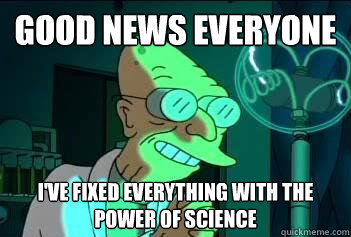
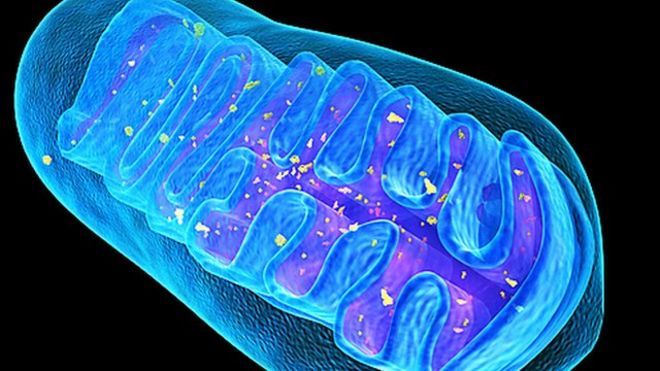

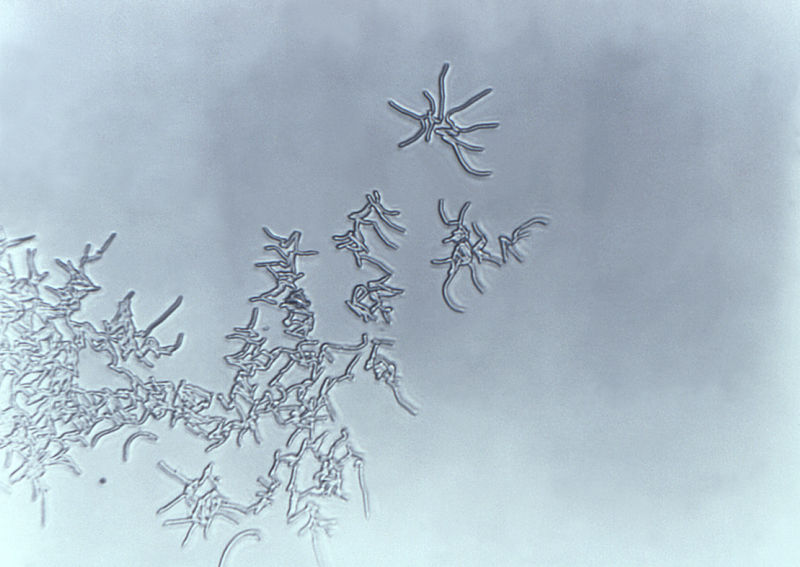
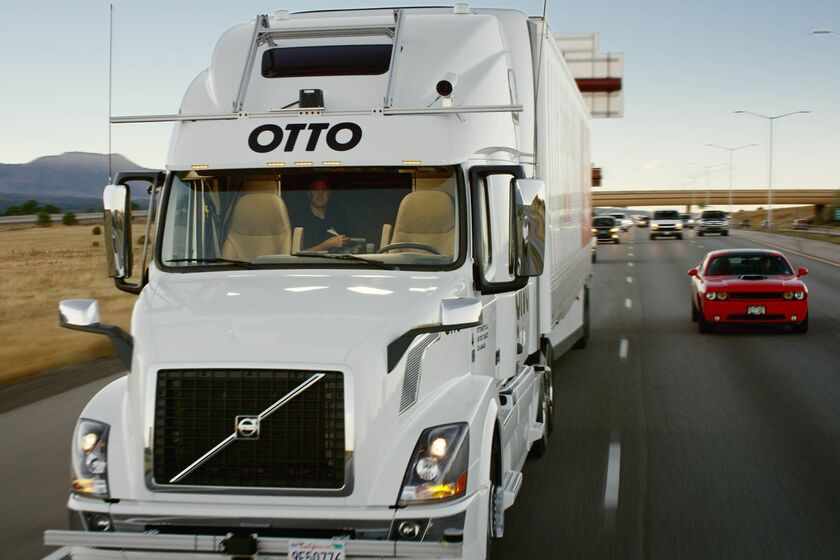

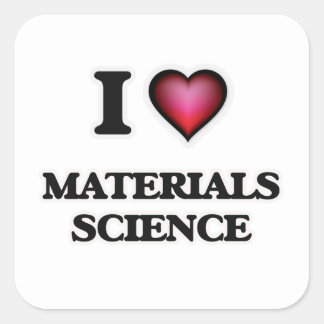












Bookmarks